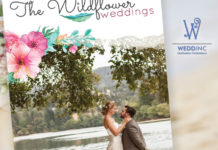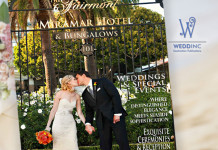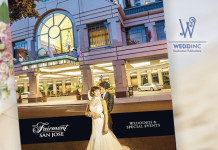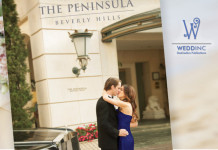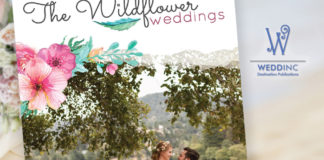Floriography – the language of flowers – is an art that flourished in the Victorian Era under a mix of writers, poets, and publishers. The language quickly gained favor in the 1800’s and became a favorite of royalty. In addition to being a wonderful way to communicate one’s feelings for a lover without one’s royal court knowing their business. It was also a discrete way for a lover to communicate their intentions without the awkwardness of words or the dread that comes with the possibility of rejection. What could be better than that for the otherwise shy and uninitiated lover?
For instance, a suitor could send a ‘secret lover’ a bouquet of gardenias signaling their affections privately, letting the recipient know they have captured their heart, ever so secretly.
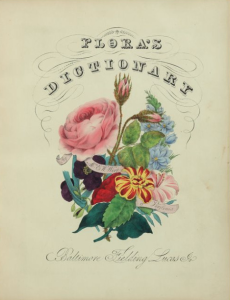
It was Charlotte La Tour’s floral dictionary in 1858 that circulated to all corners of the world that vastly popularized floriography as hundreds of editions began popping up around not only France and England, but also Belgium, Germany, various other European countries, the United States, and South America. It was also around that time that The Victorian use of flowers as a means of covert communication bloomed alongside a growing interest in botany. From Flora’s Dictionary (1829) Floriography was popularized in France as early as 1810, while in Britain it caught on around 1820, and in the United States by about 1830. The first dictionary of floriography appeared

in 1819 when Louise Cortambert, writing under the pen name ‘Madame Charlotte de la Tour,’ wrote Le langage des Fleurs. British floral dictionaries soon followed, including Henry Phillips’ Floral Emblems published in 1825 and Frederic Shoberl’s The Language of Flowers; With Illustrative Poetry, in 1834. Robert Tyas’ The Sentiment of Flowers; or, Language of Flora, first published in 1836, was considered the English version of Charlotte de la Tour’s book. From Flora’s Dictionary (1829)
With the growing popularity in the field of floriography, bouquets became enlaced with wonderfully romantic meanings shared between the bride and groom. What if we took a cue from latter days and designed our bouquets with the same care for symbolism the lovers of the Victorian Age once did, rather than based upon a decided color theme?
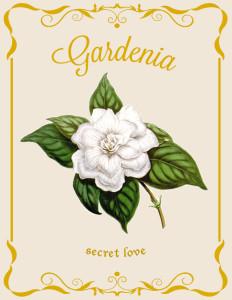 GARDENIA: Secret love.
GARDENIA: Secret love.
For those whose love is fresh and new, what better a way than to recognize the fledgling love than by a bouquet of gardenias? The secret cant be kept for ever but this is a great way to preserve the new and lovely time of new beginnings.
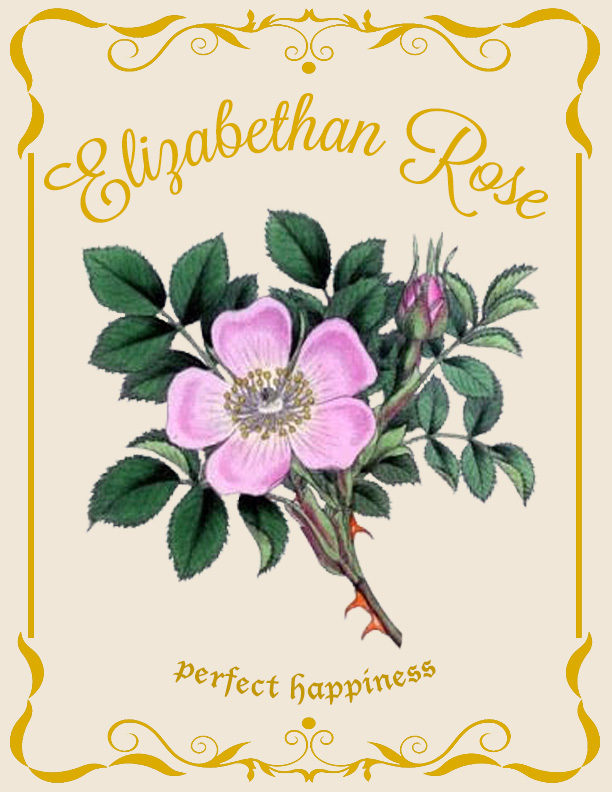 ELIZABETHAN ROSE: perfect happiness
ELIZABETHAN ROSE: perfect happiness
If you desire a marriage of “unobtrusive loveliness”, “perfect happiness”and “appreciation”, your wedding day will be adorned in white hyacinth, Elizabethan roses and towering sunflowers.
 SUNFLOWERS: Pride and Appreciation
SUNFLOWERS: Pride and Appreciation
Tall, beautiful, sunny and strong. The sunflower symbolizes the statuesque and bold, what better a flower to be known by?

LILY OF THE VALLEY: A Return of Happiness
Whether Kim Kardashian (Or Mrs. West) knew it or not, her floral arrangement of hydrangea, hyacinth and orchids symbolized “thanks in understanding”, “sorrow” and “ecstasy” – I am going to guess not. And, the wall of white roses, hydrangea, and peonies that Kanye sent to his lovely wife? Well, hopefully he clarified his sentiments with a card as these flowers have a multitude of meanings that relatively signify anything from “humility”, “thanks in understanding” and “a happy marriage” to “secrecy”, “frigidity” and “shame”. Maybe he should have gone more simplistic and gifted Kim with Night Scented Stock.
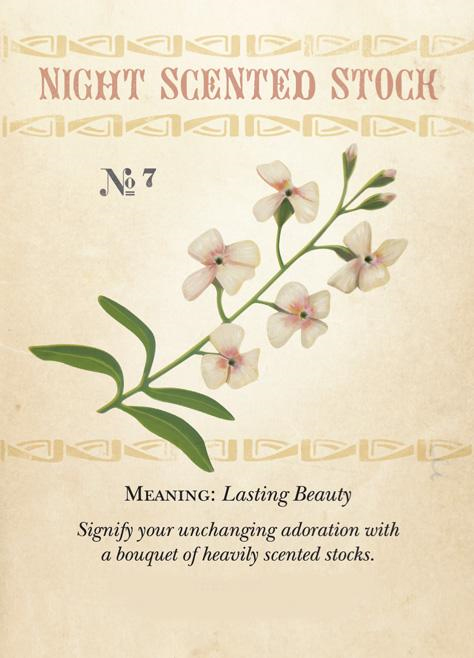
NIGHT SCENTED STOCK: Lasting Beauty
Simply perhaps the best way to recognize a lover. What woman doesn’t hope to know that her beauty will last a life time, at least in the eyes of her forever lover?
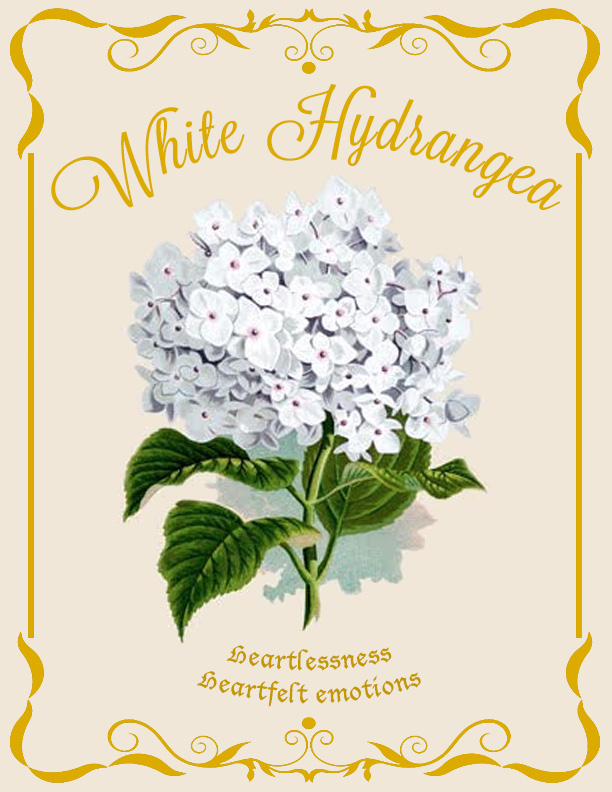
WHITE HYDRANGEA: Heartlessness and Heartfelt Emotions
Meanings ranged based on the flower’s type and color, and even the way in which they are presented. Take the carnation, for example. While a red carnation symbolizes a love so deep the heart aches, a striped carnation means a refusal of that suitor. And, if a carnation is given upright, it retains its common meaning of devotion, while an inverted bouquet would symbolize its reverse: animosity.
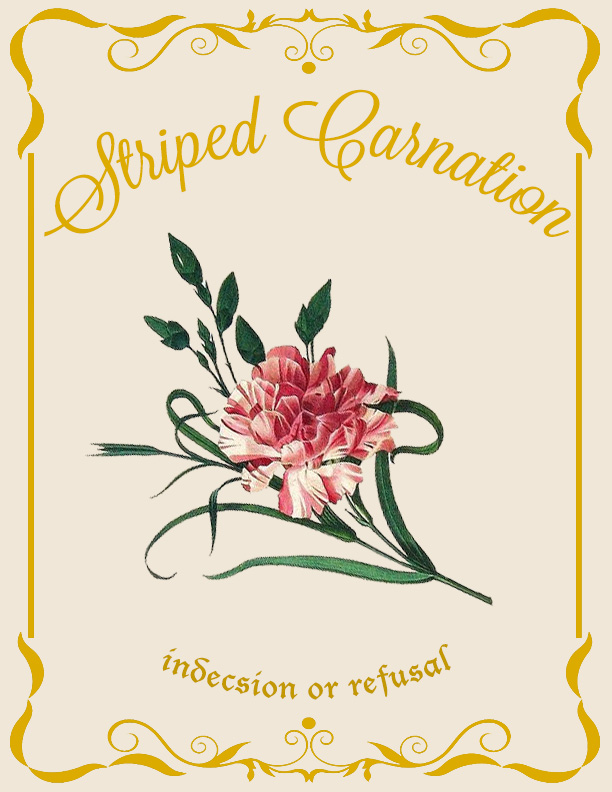 STRIPED CARNATION: indecision or refusal
STRIPED CARNATION: indecision or refusal
Even the hand by which one took or gave the flowers became plaited with meaning: the left signifying ‘no’ and the right signifying ‘yes’. If it weren’t for ‘the language of flowers’ these two shy lovebirds in Sir Lawrence Ama-Tadema’s painting might not ever
Have had the chance to express their infatuation for each other.
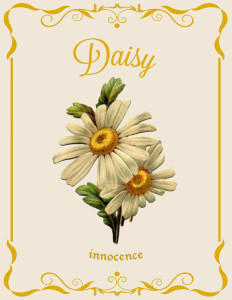 The DAISY: simple and sweet innocence
The DAISY: simple and sweet innocence
Perhaps the most happy and sweet of all flowers, the daisy holds a rightful meaning in ‘simple and sweet innocence’.
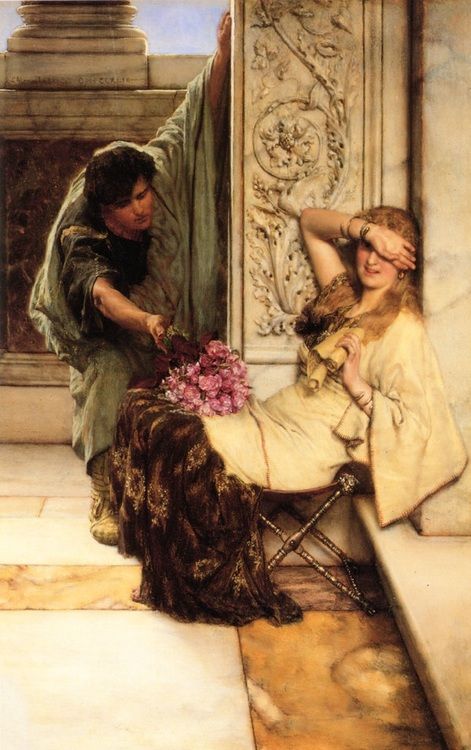 Painting by: Sir Lawrence Alma-Tadema 1836-1912
Painting by: Sir Lawrence Alma-Tadema 1836-1912
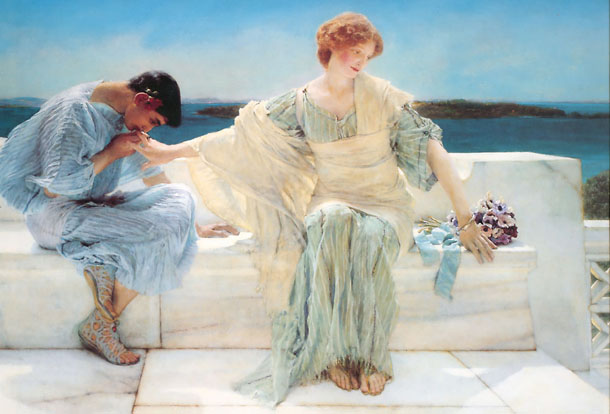
Painting by: Sir Lawrence Alma-Tadema, 1836-1912
From well before the time of La Tour’s publishing of Le langage des Fleurs and well into the 21st century, flowers have always been gifted with deeper meanings, but now that meaning can go far beyond a simple gesture by reminding ourselves that each petal has a weighty significance.
So, whether you are going for something blue, something seasonally sourced or a crown to adorn your locks, remember there may be a secret meaning laced within its petals that only you and a select few may know.
Here is a short dictionary of additional selected flowers and their meanings:
Almond flowers — Hope
Anemone — Forsaken
Aster — Symbol of love
Balm — Sympathy
Basil — Best wishes
Bay leaf — “I change but in death”
Bell flower, white — Gratitude
Bergamot — Irresistible
Bluebell — Constancy
Borage — Courage
Broom — Humility
Campanula — Gratitude
Carnation, pink — I’ll never forget you
China rose — Beauty always new
Clover, four leaved — “Be mine”
Coreopsis — Love at first sight
Daffodil — Regard
Daisy — Innocence, new-born, “I share your sentiment”
Fennel — Flattery
Fern — Sincerity
Forget-Me-Not — True love
French Marigold — Jealousy
Gardenia — Ecstasy
Gentian — Loveliness
Geranium — “You are childish”
Hare bell — Grief
Honeysuckle — Bonds of love
Heather — Admiration
Hyacinth — I am sorry, Please forgive me
Ivy — Fidelity, friendship, marriage
Jasmine — Grace
Jonquil — “I hope for return of affection”
Lavender — Luck, devotion
Lemon Balm — Sympathy
Lilac — First love
Lily — Purity, modesty
Lily of the Valley — Purity, the return of happiness
Lily, Calla — Magnificent Beauty
Marigold — Health, grief or despair
Marjoram — Kindness, courtesy
Myrtle — Fidelity
Oregano — Joy
Orchid — Love, beauty, refinement
Pansy — Loving thoughts
Peony — Good health, happiness
Periwinkle — Happy memory
Phlox — Agreement
Poppy, red — Consolation
Primrose — I can’t live without you
Rose, cabbage — Ambassador of love
Rose, red — Love
Rose, pink — Grace, beauty
Rose, yellow — Friendship
Rosemary — Remembrance, constancy
Sage — Gratitude, domestic virtue
Snowdrop — Hope
Star of Bethlehem — Purity
Sweet Pea — Departure, tender memory
Sweet William — Gallantry
Tuberose — Voluptuousness
Tulip, red — My perfect lover, Reclamation of love
Violet — Loyalty, modesty, humility
Violet, blue — Faithfulness
Wormwood — Grief
Wheat — Riches of the continuation of life
Willow, weeping — Mourning
Wallflower — Fidelity
Yew — Sorrow
The Rose
The Rose is the flower whose meaning we most understand, but here are some details of the meaning of the Rose that may be of further interest.
Rose, Black – You are my obsession
Rose, Champagne – You are tender and loving
Rose, Leonidas – Sweet love
Rose, Nicole – You are graceful and elegant, aristocratic
Rose, Orange – You are my secret love
Rose, Pink – Brilliant complexion; the glow of your smile; perfect happiness
Rose, Red – Passionate love; I love you
Rose, Single Stems – Simplicity
Rose, White – I am worthy of you; spiritual love; Innocence and Purity; Secrecy and Silence
Rose, White and Red – We are inseparable
Rose, White and Red Mixed – Unity; Flower emblem of England
Rose, White, Dried – Death is preferable to loss of virtue
Rose, Yellow – Friendship; Jealousy; I am not worthy
Rose, Bridal – Happy Love
Rose, Dark Crimson – Mourning
Rose, Hibiscus – Delicate beauty
Rose– I’ll remember always
Rose, Thornless – Love at first sight
Roses, Bouquet of Mature Blooms – Gratitude
Multiple Roses
Single bloom red Rose – Love at first sight or I still love you
Single Rose, any color – Gratitude or simplicity
2 Roses – Mutual feelings
3 Roses – I love you
7 Roses – I’m infatuated with you
9 Roses – We’ll be together forever
10 Roses – You are perfect
11 Roses – You are my treasured one
12 Roses – Be mine
13 Roses – Friends forever
15 Roses – I’m truly sorry
20 Roses – I’m truly sincere towards you
21 Roses – I’m dedicated to you
24 Roses – Forever yours
25 Roses – Congratulations
50 Roses – Unconditional love
99 Roses – I will love you all the days of my life
108 Roses – Will you marry me?
999 Roses – I love you till the end of time


